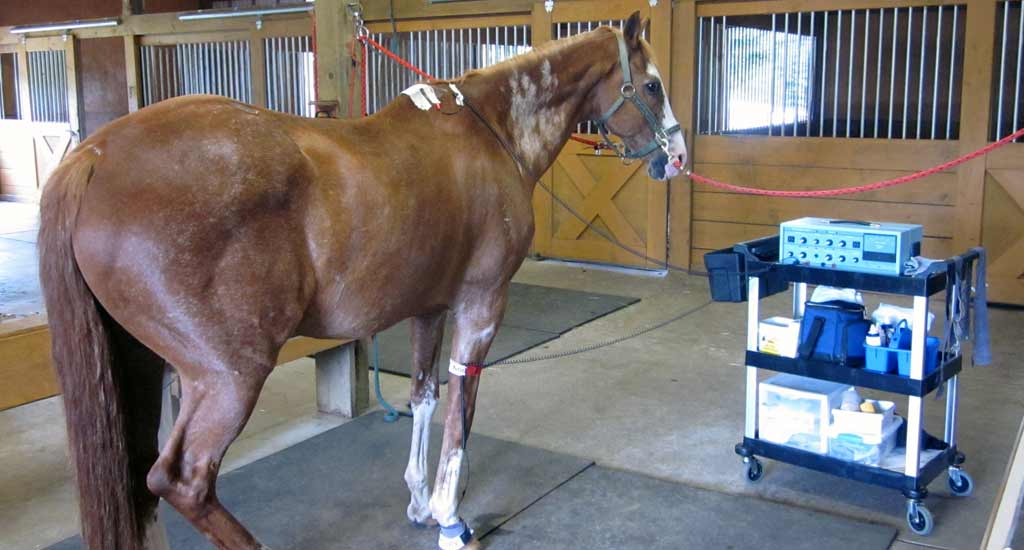Therapy Tools to Locate & Heal
At-Home Tools for Helping your Horse
Article by Deborah Powell, as published in SouthWest Horse Trader (August 2011)
Uncovering the source of your horse’s discomfort is often a daunting experience. After identifying the problem, the question of “what next” only adds to the challenge.
To make this task a little easier, I wanted to share a few tools that help locate ailments, provide pain relief, and promote healing. After 15 years treating horses with therapy products, I have found a variety of options to find and treat problems so your horse can feel its best.
The first three tools are microcurrent devices, which use low-level electrical stimulation to promote healing. Microcurrent provides pain relief, releases endorphins, and stimulates the body’s self-healing mechanisms. The other two are diagnostic tools that can detect heat indicative of possible problems.
Disposable Patches
Initially, disposable microcurrent patches were only used to stimulate healing, until it was accidentally discovered that the patches have a slight diagnostic quality. When a patch is working hard – for example treating a fresh ligament strain – the battery drains quickly. If the indicator light only lasts 200 hours, rather than the usual 500, you know that area needs more microcurrent treatments. As the patches last longer, it indicates the leg is improving.
Basic Biofeedback – Two Step Process
Microcurrent units with basic biofeedback are a significant step up, and they provide readings using a function called Galvanic Skin Response (GSR). GSR is a meter used to measure conductance through the skin.
Using the GSR function, you can measure between two points to determine if current can flow through the tissue. All cells have normal conductance, so if a reading is high or low it indicates there is an issue.
After taking readings, you can use the same device to treat your horse with microcurrent. During a single treatment, which typically lasts 45 to 60 minutes, the horse will visibly become more comfortable. A horse’s overall performance usually improves after just a few sessions.
A note on GSR Readings: A low reading represents a chronic issue, scar tissue, or poor circulation. A high reading represents inflammation.
Advanced Biofeedback – Locate & Treat in One Step
If you’re looking for an even quicker and precise process, there are devices that can locate and treat simultaneously. Advancements in technology have enabled the development of microcurrent biofeedback units that can analyze information from the body and automatically adjust the treatment. During this process the device is applying microcurrent to the horse. To make sure you know it has found something, the handheld unit will light up and chirp, telling you, “I need to treat this area!”
Once a problem has been located, the advanced biofeedback devices have additional programs for specified treatments. These highly interactive devices have shorter treatment times and tend to have faster results than the basic models.
Taking GSR reading with Precision.
Treating and taking readings with the Best-Vet.
Scanning horse with FLIR thermal camera.
Complementary Tools
Surface thermometers and thermal imaging cameras are now economical to purchase and are complementary tools to use with microcurrent devices.
Surface Thermometer: Surface thermometers with laser pointers can be used to compare temperatures. For example, if you point the laser at the front right hoof, then at the left you can compare the temperature of each. By determining differences in temperature you can pinpoint the cause of discomfort or lameness.
Thermal Imaging Cameras: With one click, a thermal imaging camera can save the colorful picture and temperature readings displayed on its LCD screen. The highly sensitive cameras can detect slight variations in heat, making it possible to identify conditions before the onset of lameness.
Your early detection of a problem, followed up with analysis and diagnoses by your veterinarian, can help prevent injuries. These tools can be used to keep an eye on your horse, ensuring it is feeling and performing its best.
To read the first installment of this three-part series published in SouthWest Horse Trader, Click Here. For the third installment, Click Here.
Get Started Today
Check out the Products page to find the right option to add to your therapy toolbox

